The Holy Mountain is a surreal circus. Rationality slips away as a cavalcade of imagery speaks in the language of dreams. Meanwhile, metaphorical implications abound, attacking so much of reality The Holy Mountain changes people who risk a watch. Even those appalled or unimpressed become aware of perspectives they may’ve never considered. Yet, it may be that it only now serves as a time capsule of psychedelic filmmaking.
The fifty-year-old film, released in the U.S. in November 1973 after debuting at Cannes earlier that year, is the brainchild of director Alejandro Jodorowsky. Since 1957 this multidisciplined artist has been challenging audiences through provocative, sometimes controversial, surreal content. Influenced by Antonin Artaud’s theatre of cruelty which aimed to create “a primitive ceremonial experience intended to liberate the human subconscious and reveal [humanity] to [itself],” the works of Jodorowsky use irrational content to compose symbolic meaning while creating an ambiance that assists the narrative. His films often confront various ideas such as society, philosophy, spirituality, religion, and sexuality, but offer little to no answers. In other words, The Holy Mountain unhinges reality then leaves the audience alone, adrift in that distorted perspective.
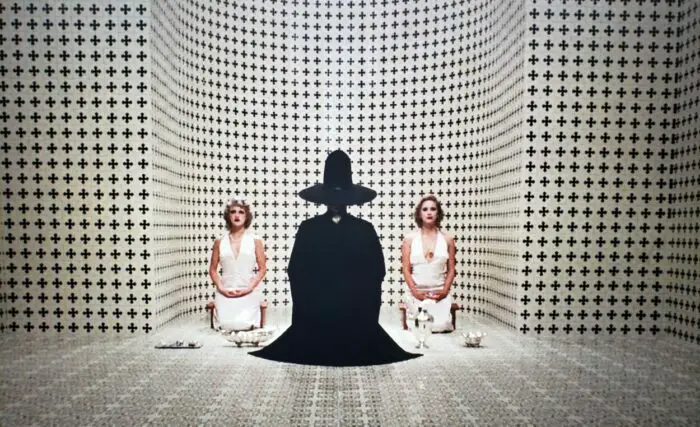
Spoilers ahead!
The movie could be oversimplified by saying an alchemist brings eight people together who then take a journey of enlightenment. Something deeper might suggest The Holy Mountain is a delirious cinematic allegory blending inspirations from “The Ascent of Mount Carmel” by Saint John of the Cross with the unfinished novel “Mount Analogue” by René Daumal; influenced by Kabbalah, Christianity, Gnosticism, Buddhism, the tarot, and containing Jungian symbolism to criticize cultural woes such as capitalism, government sanctioned violence, colonialism, and sexuality. Any further summation risks turning into a novella describing every role, and scene, while including each implicative intricate details.
Yet, the plot, though it carries all involved to the conclusion, isn’t as important as the visual journey there. That’s because The Holy Mountain isn’t so much a story as an experience. Talking about this movie is a lot like relating a dream. Others may be able to hear the details, but they can never react to the profound weirdness without having direct interaction. After all, dreams hit the dreamer hardest. Listening to someone’s nightmare isn’t as frightening as being in one, and The Holy Mountain is similar.
It’s one thing to hear about the clown toymaker surrounded by little people dressed as Santas or describe patrons partying at the Pantheon bar built among tombstones. Hearing about people getting shot then birds erupting from their wounds isn’t the same as witnessing it firsthand. That visceral reaction to imagery can only happen to an audience absorbing The Holy Mountain. And although some may think they know how such scenes might make them feel, the point is to feel them—to experience the moment and live the thoughts it breeds.

Jodorowsky was born in Chile in 1929 to Russian émigrés. Part of his youth sounds like something out of Roberto Bolaño’s “The Savage Detectives”. He hung out with Chilean poets such as Stella Díaz Varín, Enrique Lihn, and Nicanor Parra, became a circus performer, and briefly attended college before moving to Paris.
There he encountered surrealism and studied mime under Marcel Marceau. After finding his way into filmmaking, Jodorowsky composed an adaptation of Thomas Mann’s 1940 novelle “The Transposed Heads” called Les têtes interverties (The Severed Heads). He then founded the Panic Movement with Roland Topor and desterrado Fernando Arrabal. Their collective goal being the production of shows that were shocking and violent in order to “release destructive energies… to arrive at sustained peace and beauty.” At the same time, they offered a mischievous take on surrealism.
Having gotten all he could out of Paris, Jodorowsky moved to Mexico in 1965. While there, circa 1967, he became a disciple of the Zen Buddhist monk Ejo Takata. As with any artist, these life experiences soon culminated in creative expressions, specifically the cinematic.
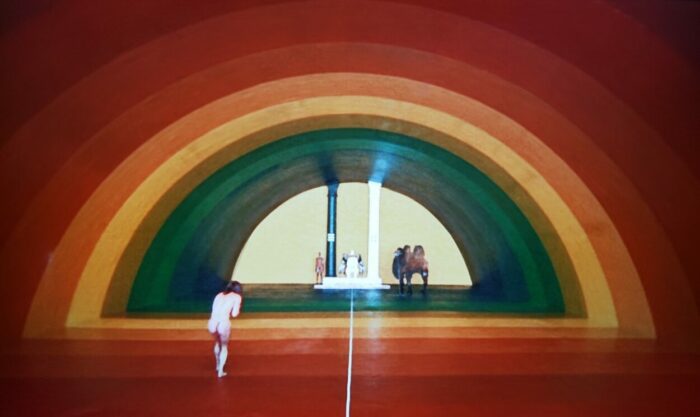
Around then Jodorowsky wrote and directed his first full length feature Fando y Lis. The film caused a riot that required Jodorowsky to flee hiding on the floor of a limousine. Undeterred, perhaps even inspired by the intense reaction, he went on to compose El Topo (1971). This acid western, which could be viewed as a messianic revenge fantasy for the counterculture, cemented his reputation as the father of midnight movies.
Jodorowsky once said, “I ask of film what most North Americans ask of psychedelic drugs. The difference being that when one creates a psychedelic film, he need not create a film that shows the visions of a person who has taken a pill; rather, he needs to manufacture the pill.”
Perhaps that’s why hallmarks of his filmography include overt spiritual imagery, unabashed nudity, syncretistic religious elements, graphic violence, and absurdist imagery commenting on society. Carefully composed scenes have the same meticulous attention to detail as a Wes Anderson film. However, the distinct difference between the two is that Jodorowsky’s details are more often overtly symbolic rather than stylistic. Whereas Anderson uses color to evoke time, place, and mood, Jodorowsky is forging connections to various, typically arcane, ideas.
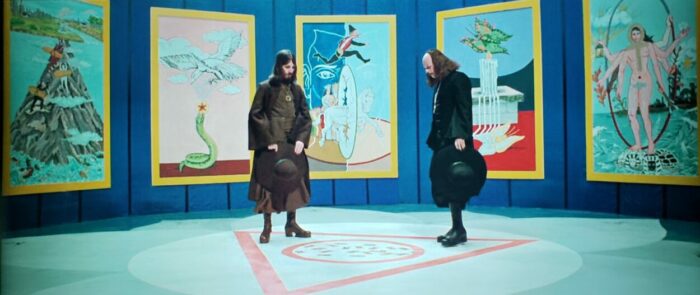
There’s also a direct connection to the Tarot. For decades, Jodorowsky has studied the cards with a specific focus on the Tarot de Marseille. On a DVD extra for The Holy Mountain, he offered his interpretation of the deck. Basically, he asserts the Tarot is a narrative regarding the mad fool who goes on a journey through the arcana which leads to Le Monde (The World), where a higher understanding of the universe is achieved. Such a summation is almost a synopsis for the plot of The Holy Mountain.
With all this in mind, consider the course for one main character. The Holy Mountain basically begins with The Thief, played by Horacio Salinas. Clearly a Christ figure, he goes through a series of surreal encounters symbolically linked to capitalism, colonialism, and Christianity. For example, he’s crucified then later cradled by a faux Mary in recreation of Michaelangelo’s Pietà. At the same time, he corresponds to the Tarot card for The Fool the same way his companion, a quadruple amputee portrayed by Basilio González, is indicative of the Five of Swords as well as the human ego.
The Holy Mountain can overload anyone trying to dissect it. The movie is intertwined layers, some of which lead nowhere. Besides blatant statements about turning literal shit into gold, there are symbolic explorations at every turn. At one point, the conquest of Mexico is visited in a performance by the Great Toad and Chameleon Circus. Here the bloody past is depicted using cane toads as conquistadors assaulting Mexican plateau horned lizards. It’s a commentary on colonialism while simultaneously showing how dark chapters in human history become entertainment over time.
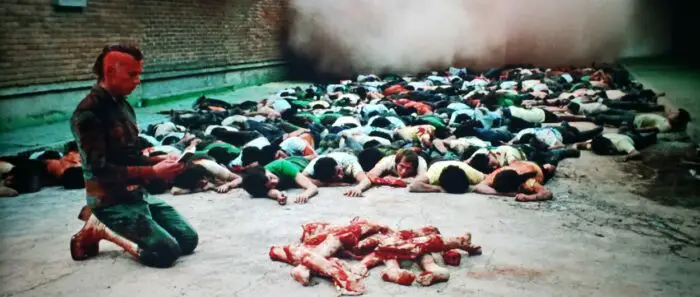
Furthermore, much of this is conveyed without dialogue. Utilizing his background as a mime, Jodorowsky managed to relate events primarily through vivid imagery, character expression, and action. There isn’t a comprehensible line of dialogue until almost fifteen minutes in. Then another lull in spoken content until about the 35-minute mark which increases the potential for audience interpretation. Consider when soldiers march through the city carrying cruciform, flayed animals atop their rifles then ruthlessly shoot people in the streets, or as the disciples of Axon brutalize protesters. Without dialogue as a guide, audiences compose why this is happening themselves.
Granted, concrete analogs exist for these moments of violence. The slaughter of unarmed protesters could be related to the Tlatelolco Massacre, when the Mexican military fired on students protesting the 1968 Olympics. However, The Holy Mountain might just as easily be making a broader critique about the brutality with which peaceful protests around the world are so often put down. Even today demonstrators find themselves the victims not only of ruthless police tactics but attempts to legalize any violence against them. In that respect, The Holy Mountain is more prophet than preacher, commenting on things which would continue to happen as well as what has already occurred.
Meanwhile, more subtle elements are affecting audiences without them necessarily being aware. The carefully composed shots at the beginning of the film often involve a rock steady well-placed camera. Performers are given specific spots to stand then conduct choregraphed movements. Yet, as The Holy Mountain progresses camera work gets looser. At one point, a handheld is used to shakily follow the pilgrimage up the titular mount. The fantastical surreal elements gradually give way to more realist depictions. And considering the ending, it’s safe to say this isn’t by accident.
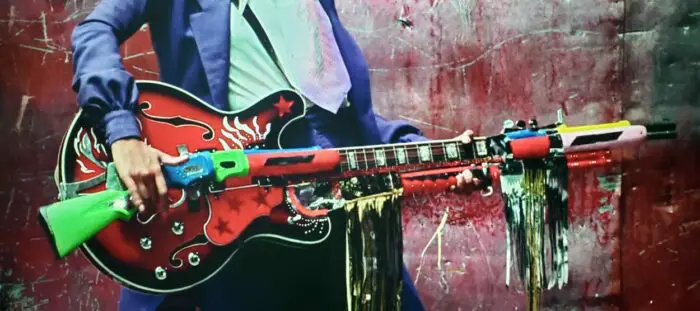
The Holy Mountain concludes with the alchemist revealing they are all in a film. He declares, “This is Māyā!” in direct reference to Indian philosophies. Specifically, notions regarding “the cosmic illusion that the phenomenal world is real”, resulting in human ignorance (ajnana) about the true nature of reality since “the phantoms of a dream are considered to be true until the sleeper awakens.” Aware that they must leave this fiction to find reality, the main characters head off as the screen fades out.
Through a broken fourth wall, everything about The Holy Mountain becomes meaningless artifice. This leaves the audience wondering if their viewing experience was actually enlightening or simply a revelation of their own pretentions. It calls to mind ongoing debates over Marcel Duchamp’s Fountain, an overturned urinal he submitted to the Society of Independent Artists in New York—absurdity which invariably inspires reaction. In that respect, Holy Mountain isn’t the search for meaning but a surreal critique of how and where people go looking for meaning.
Much of what makes the movie work is the excellent cinematography of Rafael Corkidi. Surreal films live or die by their images. If colors don’t come across, or visual details are unclear, the whole construct can fall apart. Corkidi had worked with Jodorowsky on El Topo. As such, he knew how to best capture what the writer-director orchestrated. And for a long time, it was hard to appreciate that aspect of The Holy Mountain.
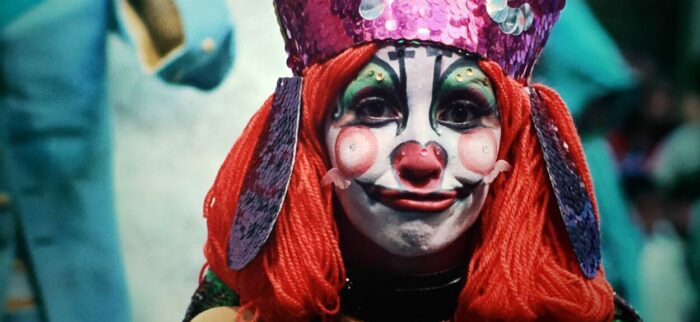
John Lennon’s love of El Topo inspired his manager Allen Klein to purchase the film and give it a U.S. release. Klein then produced The Holy Mountain, but when his relationship with Jodorowsky became strained, the Beatle’s manager blocked any wider release of the film. For decades after, watching Holy Mountain meant observing it through poor quality bootlegs. Only with a restored release around 2007 did audiences get a chance to truly experience Corkidi’s contribution.
Sonically, The Holy Mountain is also ahead of its time. Consider the track “F*ck Machine” which utilizes early electronic music. The soundtrack features Don Cherry and Ron Frangipane. Trumpeter Cherry helped create free jazz alongside Ornette Coleman. Frangipane played keyboards on “Sugar, Sugar” for the fictional band The Archies, and worked with talents like Janis Ian, Grace Slick, and Diana Ross.
According to Synth History, “Ron turned Jodorowsky’s melodic fragments into orchestral arrangements and Don improvised music as the film was projected in silence.”
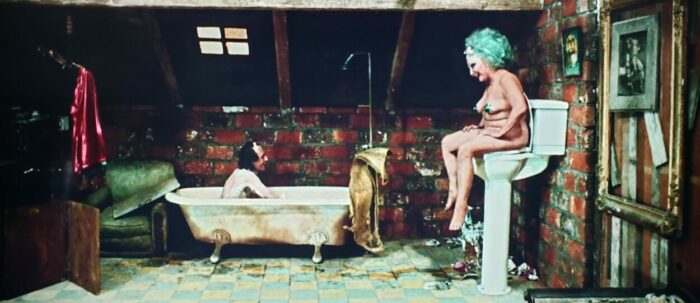
The Holy Mountain is a midnight movie that’s influenced a diverse array of creatives such as David Lynch, Nicolas Winding Refn, Taika Waititi, Marina Abramović, and Erykah Badu. Since its premiere at the 1973 Cannes Film Festival the movie has stirred controversy. Then it was because of “sacrilegious imagery and raw existential symbolism.” Now it’s a question of separating the art from the artist, if that’s even possible.
In recent years, Jodorowsky has come under criticism for a rape scene in El Topo. He used to claim it was real, but now insists such statements were a publicity stunt. Either way, it makes a person understandably disinclined to embrace him and his work.
Fortunately, The Holy Mountain isn’t necessarily a journey everyone needs to take. Even it asks why take the trip? As with any movie, audiences need a good reason to go. Technically, The Holy Mountain only offers a surreal distraction.
Maybe that’s enough. Maybe its future is being a relic of the past, only interesting academics and cinephiles. Or perhaps, as the alchemist says in the end, “Goodbye to the Holy Mountain. Real life awaits us.”



